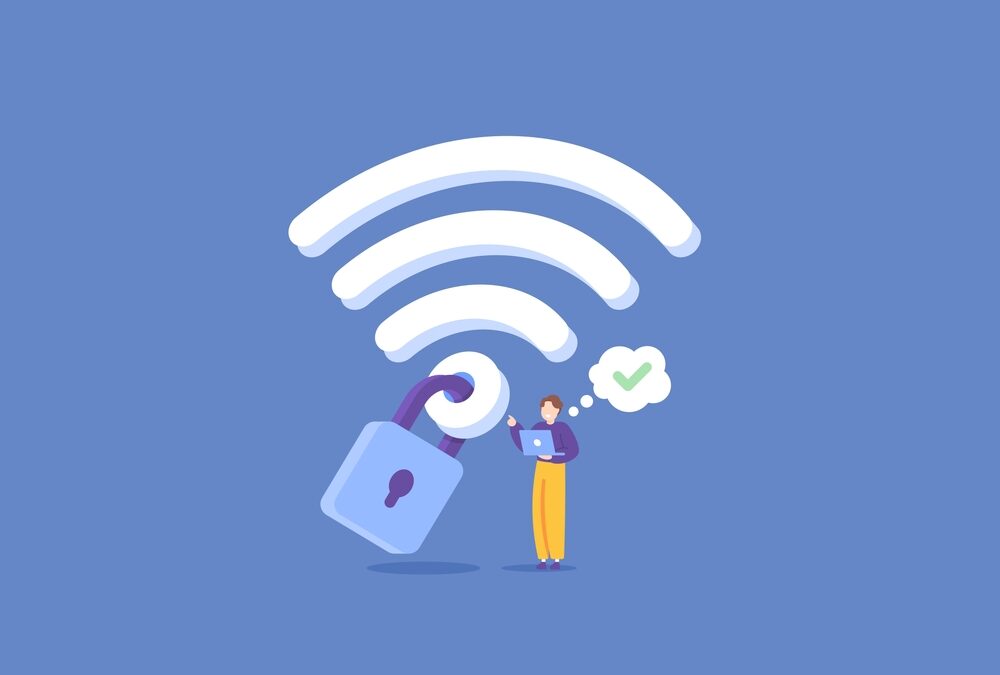Currently, and regardless of their location, enabling guest WiFi access is part of customer care especially in the age of information. Now, where we are heavily dependent on the internet, having an isolated safe, protected network for outside users is no more a luxury but a requirement. In this blog we will focus on considerations such as guest WiFi installation on websites like techguest.com, the importance of appropriate password usage, WiFi performance enhancement and maintenance of the networks.
Introduction to techguest.com and Its WiFi Services
In recent times, Techguest.com has surfaced as one of the best contenders in providing guest Wi-Fi networks. It is primarily aimed at businesses such as hotels, restaurants, and event planners, who find it easier to connect to guests and secure the internet, connect the guests without worrying about passwords and safety issues. A user-friendly design ensures they can automatically adjust it to suit their customer needs while in the control of the system thereby maintaining the scale between security and ease of access.
The system further grants options for control of access and management of passwords which enhances the quality of service for users on the network. Every customer irrespective of their establishment whether it is a small coffee-house joint or a big hotel every guest wi-fi matters for their satisfaction.
Importance of a Guest WiFi Network
At times, offering WiFi access to guests is a good consideration to demonstrate hospitality, however, it regularly presents security challenges if not managed effectively. Establishing a guest WiFi connection ensures that the visitors do not have access to the primary connection. This segregation allows the visitors to use the internet without putting at risk personal documents, office content, or other smart devices that are linked to the main connection.
Apart from this, there are performance enhancements that can be realized by the use of guest networks as they separate the guest use, thereby avoiding congesting the main network which may result in reduced speeds.
Setting Up Guest WiFi: Key Steps
Setting up a guest WiFi network is simple but not without some complexities as it entails accessibility versus security. Here’s a little overview of the steps needed to get things running:
Access the Router Settings: Accessing a router configuration through a browser is almost always necessary. Usually, this is done by putting the router’s IP address (most commonly 192.168.1.1) in the address bar.
Make Your Way to Guest Network Options: Most of today’s routers are equipped with the guest network option. In the settings of the router, there will be a possibility to create a separate SSID for guests.
Assign Appropriate Network Name and Password: Choose an appropriate guest WiFi name and provide a strong password. Do not use predictable passwords like “guest123”, “welcome”, etc. Instead, create out of the box passwords using letters, numbers and characters.
Modify Some Settings: Another thing that you might wish to do is to limit certain sections that the clients can access or specific devices such as shared files, printers to avoid the guests accessing your private or work networks.
Usage Limits and Monitoring: Impose maximum connection limits to curb the number of users connecting at the same time to avoid congestion and also regulate traffic to ensure the best speeds.
Techguest.com WiFi Password Best Practices
Ensuring that there is a guest WiFi password is a requirement and not just a suggestion. This is due to the fact that in the absence of a password, anyone in the vicinity of the network would be able to utilize it, causing concerns along the lines of bandwidth stealing and more troubling issues that would, in this case, comprise downloading content illegally. Some of the best practices as far as WiFi passwords are concerned include the following:
Create Strong Passwords: Strong passwords should be between 8 and 12 characters, while these also have a variation of alphabets, numeric, and special characters.
Change Passwords Regularly: Regularly changing the guest WiFi password reduces the risks associated with the aspect of security. While some businesses will do this in very short durations, such as daily or weekly, or a month especially where there is a lot of turnover of guests, some will also change their password every few months even if there aren’t any new guests.
Avoid Reusing Passwords: Do not even think that a single password will always work due to the priorities of the organization and its traffic. That would be one way of welcoming guest network abuse if something like invading your network by previous guests who were awarded different passwords and interfered with operations can ever be imagined.
Easy Password Distribution: Although safety issues cannot be taken for granted, we always seek ways of making some processes easier. For instance, some establishments consider it convenient and therefore stick on the premises their guest WiFi codes or avail it through their customer service.
WiFi Performance Optimization for Guests
One of the major obstacles in providing guest WiFi is keeping the network stable and fast, especially on peak hours. Guest networks, if not supervised can become slow due to excess connection of so many devices.
Limit the Number of Devices: Numerous routers have this option that enables the user to choose the maximum number of devices that can join the guest network, which saves on over-usage of bandwidth.
Bandwidth Management: Some routers are capable of limiting the available bandwidth for the devices connected to the guest network thus allowing only a certain percentage needed for the primary usage. This allows the guests to surf and stream freely while the primary network remains unaffected.
Network Monitoring: Always keep an eye on the guest network for signs of abnormal or excessive consumption over a period of time. This helps in mitigating issues like unwanted intrusion or heavy usage of the line by activities such as torrent downloads.
Legal and Ethical Considerations of Providing Guest WiFi
Another aspect of providing guest WiFi is that it has legal implications – especially when you’re operating a company. When network security is inadequate, as in the case of open Wi-Fi, you might face legal issues for any wrongdoing carried out by anyone using your network. Some of the steps you may want to opt to include are:
Causation of Information: Cause and effect works both ways. Make sure that appropriate information is provided regarding the terms of your guest Wi-Fi, as well as any potential consequences of misusing your network, to ensure there is legal protection for the business.
Surveillance of User Behavior (If Applicable): Some companies may decide to monitor and record guest behavior for security reasons. In such cases, they must abide by local laws and inform users about these monitoring practices.
Firewall And VPN Trenches: Applying a higher defense on both the guest and primary networks, the installation of a firewall or VPNs on the company router is highly recommended. This provides additional security preventing access to the main network by unauthorized persons.
Future of Guest WiFi – Insights from techguest.com
‘With the advancement of WiFi technology, the idea of guest networks is changing too. More and more companies are implementing smart solutions such as auto-changing passwords as well as gathering customer data for offering insight to companies, techguest.com.
A case in point is when organizations request user names and/or email addresses through the WiFi login of a guest WiFi and use that data for advertising and marketing campaigns aimed at those users. This approach, which also serves to eliminate frustrations that guests experience when accessing WiFi in a facility, enables the business to learn more about its guests and how to customize their services in order to foster better loyalty among their customers.
Conclusion
In today’s world of customer service, even at home, providing guest WiFi is no longer a luxury but a necessity. Managing guest networks can be an overwhelming and time-consuming process; however, using management services such as techguest.com makes the process easier and more secure. These management services also give a provision for guest access but at the same time contain the risk of including the guests in the internal network by employing best practices as suggested in this article, that is strong passwords, changing the passwords regularly, understanding the nature of the network usage, and so on. Thus you can provide internet access to your visitors without risking the security of your connection or other sensitive data.
For the case of companies, guest WiFi can be seen also as an additional marketing service with an opportunity to track customer behavior. It is applicable whether it is a case of installing a simple home guest network or administering a commercial-grade WiFi network, management solutions like techguest.com also optimize the way things are done.
We here at YTMP3 will provide you with content related to these topics on a timely basis. Do check our website regularly for timely updates.

